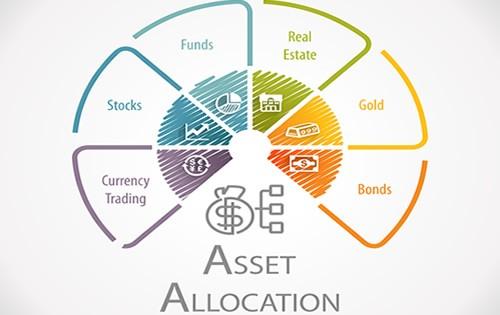As I mentioned in my 2018 stock market in review article, asset allocation is very important in evaluating your investment portfolio. Many people perform their asset allocation themselves or hire a financial expert to assist with it. If you are looking to start performing your asset allocation yourself or learn more about it, I thought I would provide a high-level overview. Please let me know if you have any follow up questions, and I would be happy to provide additional information.
Asset allocation is really just dividing your money into different asset categories. These categories include stocks, bonds, mutual funds, exchange traded funds (ETFs), private companies, real estate, cash and cash equivalents, private equity, commodities, etc. The theory behind asset allocation is the more categories you invest in, the less risk you have in your overall investment portfolio. This is because each asset class or category has a different correlation to each other. For example if stocks rise, bonds may decline or vice versa.
The process of determining the mix of assets to hold in your portfolio is a very personal one and it depends on a variety of factors. You will need to decide what works best for you and you should evaluate it based on the following:
- Time Horizon: Your time horizon is the expected timeline (months, years, etc.) you will be investing to achieve your financial goal. The general rule of thumb is the longer the time horizon, the more risk a person may be willing to take. If a person is able to wait out volatile performances, the portfolio should grow over the long term. If your time horizon is shorter, you may want to be more conservative in your investments.
- Risk Tolerance: Risk tolerance is your ability and willingness to lose some or all of your original investment in exchange for greater potential returns. This is hard to quantify and I would recommend speaking with a investment professional to better understand what your risk tolerance is. The higher the risk tolerance, the more you are willing to lose for higher returns.
Asset allocation is very important because it has a direct and major impact on whether you will be able to meet your financial goals. The right amount of risk and return is difficult to define and it depends on each person. Current market conditions are also important to look at and can affect your portfolio performance.
Has anyone recently re-allocated their portfolio? What was your process and what would you recommend to someone who has not done it before?


I usually re-do my asset allocation twice a year.